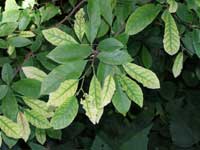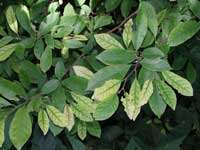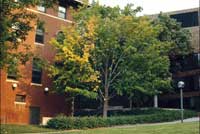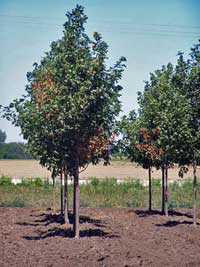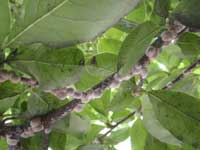Extension > Garden > Diagnose a problem > What's wrong with my plant? > Deciduous > Magnolia > Leaves discolored
Magnolia > Leaves > Leaves discolored
1 of 3
Iron chlorosis
Erwinia amylovora
- Leaves yellow with green veins
- Most severe on branch tips or new growth
- Affected trees have poor growth, undersized leaves
- Symptoms occur on Magnolias in alkaline soils
- More information on Iron chlorosis
2 of 3
Verticillium wilt
Verticillium spp.
- Leaves are small and yellowed in chronic infections
- Leaves wilt, eventually turn brown and die in severe infections
- Leaf symptoms are often seen on only one or a few random branches in the canopy
- Dark olive to gray streaks are often visible in the sapwood if the bark is peeled back, appearing as rings or arcs in a cross section
- Symptoms may develop over a single season, or over several years
- More information on Verticillium wilt
3 of 3
Magnolia scale
Neolecanium cornuparvum
- Yellow leaves may die and drop prematurely
- Dead twigs and reduced growth with heavy infestations
- Excrete honeydew, a sticky, shiny material on leaves and branches; sooty mold may also occur on honeydew
- Adults almost ½ inch long with whitish, waxy coating that wears off with age
- More information on Magnolia scale




